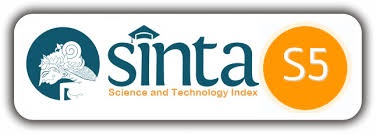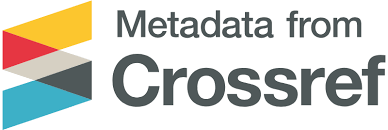An Addressing System on Tetum Language
Abstract
This study explores the addressing system in Tetum Dili, a prominent variety of the Tetum language spoken in Timor-Leste. Grounded in sociolinguistic and cultural-linguistic frameworks, the research investigates how forms of address reflect social relationships, cultural norms, and communicative values within Timorese society. Utilizing a qualitative descriptive approach, data were collected through semi-structured interviews with native speakers, autoethnographic reflection, and analysis of naturally occurring speech in public events such as wedding ceremonies. The findings reveal that Tetum Dili employs a rich repertoire of address terms, including those based on kinship, honorifics, borrowed forms from Portuguese and Indonesian, and even culturally embedded disrespectful terms used in both friendly and conflictual contexts. These address forms serve as powerful markers of social status, intimacy, respect, and cultural identity. The study underscores the importance of address systems in understanding language use in multicultural and postcolonial contexts, and it advocates for further documentation to support language preservation and education
References
Allan, K., & Burridge, K. (2006). Forbidden words: Taboo and the censoring of language. Cambridge University Press.
Braun, V., & Clarke, V. (2006). Using thematic analysis in psychology. Qualitative Research in Psychology, 3(2), 77–101. https://doi.org/10.1191/1478088706qp063oa
Crystal, D. (2008). A dictionary of linguistics and phonetics (6th ed.). Blackwell Publishing.
Eble, C. (1996). Slang and sociability: In-group language among college students. University of North Carolina Press.
Fitch, K. L. (1998). Speaking relationally: Culture, communication, and interpersonal connection. Communication Theory, 8(4), 414–435.
Fromkin, V., Rodman, R., & Hyams, N. (2018). An introduction to language (11th ed.). Cengage Learning.
Goodenough, W. H. (1970). Description and comparison in cultural anthropology. Aldine.
Gudykunst, W. B. (2004). Bridging differences: Effective intergroup communication (4th ed.). Sage Publications.
Hajek, J. (2006). Language contact and the future of Tetum. International Journal of the Sociology of Language, 177, 199–217. https://doi.org/10.1515/IJSL.2006.008
Holmes, J. (2013). An introduction to sociolinguistics (4th ed.). Routledge.
Hull, G. (2001). The languages of East Timor: Some basic facts. Instituto Nacional de Linguística, Universidade Nacional Timor Lorosa’e (UNTL).
Levinson, D., & Ember, M. (1996). Encyclopedia of cultural anthropology (Vol. 1–4). Henry Holt.
Parkin, R. (1997). Kinship: An introduction to basic concepts. Blackwell Publishers.
Samovar, L. A., Porter, R. E., McDaniel, E. R., & Roy, C. S. (2017). Communication between cultures (9th ed.). Cengage Learning.
Wardhaugh, R., & Fuller, J. M. (2015). An introduction to sociolinguistics (7th ed.). Wiley-Blackwell.
Yule, G. (2020). The study of language (7th ed.). Cambridge University Press.
Copyright (c) 2025 Antonio Constantino Soares

This work is licensed under a Creative Commons Attribution-ShareAlike 4.0 International License.













